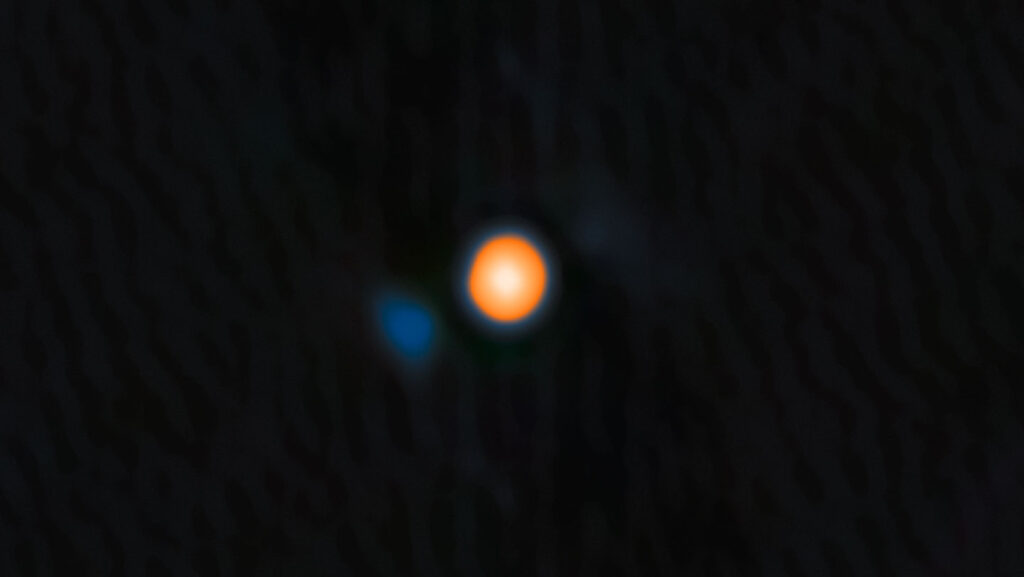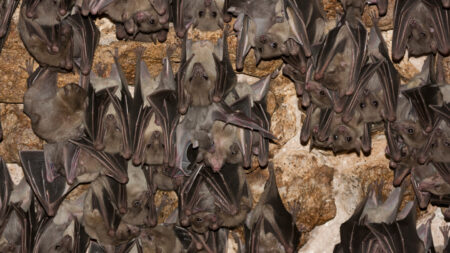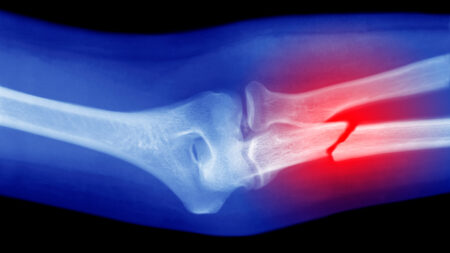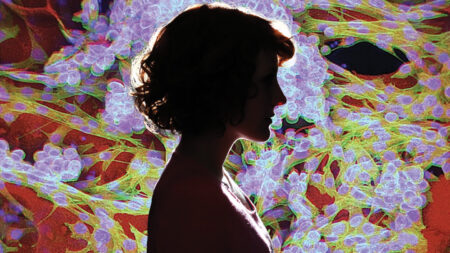Hidden cozied up to Betelgeuse, a bright red star in the constellation Orion, astronomers may have finally found the giant star’s long-sought companion. This close-orbiting partner, first postulated over a century ago, matches some predictions and adds another piece to the puzzle of the mysterious supergiant star.
The images, to appear in the Astrophysical Journal Letters, show the companion only faintly. The astronomers, and others in the field, agree that the discovery, while exciting, is not definitive.
“I think at this point it’s quite tough to say whether or not the detection is believable,” says Sarah Blunt, an astronomer at the University of California, Santa Cruz who was not involved with the study. “We’ll have to wait and see if the companion can be confirmed with more instruments.”
If confirmed, the new star would conventionally be named α Orionis B. Previously, it has been informally called the Betelbuddy, and the astronomers behind the new work suggest the name Siwarha, meaning “her bracelet,” in reference to the supergiant’s name, which translates from Arabic as “hand of the giant.”
The companion appears to orbit the supergiant at a distance just four times that between Earth and the sun, putting the companion within Betelgeuse’s expansive outer atmosphere — a perilous spot for a small star.
“The companion will have drag in its orbit,” says study coauthor Steve Howell, an astronomer at NASA’s Ames Research Center in Mountain View, Calif. As a result, the companion faces an astronomically imminent death: Within 10,000 years, it will be sucked into Betelgeuse.
The companion star probably formed at the same time as Betelgeuse, nearly 10 million years ago. But unlike the fast-aging supergiant, the smaller mass of the companion (around 1.6 times that of the sun) stunted its growth, and the star hasn’t yet started fusing hydrogen. Such a pairing of a supergiant star with a small companion hasn’t been seen before, Howell says, making it impossible to say how common they are.
Betelgeuse has recently proven to be an intriguing subject for astronomers due to its peculiar changes in brightness. An event from late 2019 into 2020, known as the Great Dimming, led some to initially believe the star would soon die as a supernova. Follow-up investigations revealed that the star had merely blown off a large cloud of light-blocking dust.
But another six-year variability in brightness led many astronomers to suspect that the supergiant holds other secrets — such as a hidden companion. Some theorized about the companion star’s characteristics, yet despite multiple observation attempts, none had been able to detect it until now. The new images, taken with the 8.1-meter-wide Gemini North telescope in Hawaii, were made with an advanced imaging technique that helps remove distortions from the atmosphere to provide higher resolution.
The next chance to observe the star will be in November 2027, when the companion is farthest from Betelgeuse as seen from Earth.
Read the full article here

















